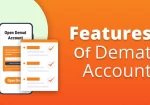Mortgage Refinancing (Refinansiering) Tips You Should Remember

If your goal is to refinance a mortgage, you should know that it works by replacing the old/current one with a new one with different terms. Household owners choose to refinance due to numerous reasons including interest rates, paying off home faster or tapping the equity.
Still, you should understand each step along the way and everything about the process including closing expenses and other factors. That way, you can determine whether refinancing is a good move, or you should choose other ways to handle each step.
We recommend you to check here, which will help you understand the importance of refinancing.
A mortgage refinance is the process of replacing your current loan and paying it off by taking a new one. Generally, homeowners choose to refinance to reduce monthly installments or interest rate. Still, you can do it to reduce the overall term, eliminate PMI or insurance, or change from fixed to adjustable-rate and vice versa.
Some people choose cash-out refinance, which is a great way of getting an additional amount from the equity. The main idea is to understand each step along the way, which’ll help you determine the best course of action.
Tips for Refinancing a Household

1. Financial Goals
A mortgage refinance is a perfect option only if you can boost your financial situation afterward. We are talking about net tangible benefit. Therefore, you should prove a financial benefit of refinancing beforehand. That is why you should create a transparent goal and ask yourself specific questions.
- Should you get a lower monthly payment?
- Do you wish to repay the loan faster?
- Should you invest in home improvement?
- Can you avoid paying mortgage insurance
The main idea is to understand a goal you wish to achieve, which’ll help you shop around based on your specific requirements and needs.
2. Credit Score
The credit score is another important consideration and factor that will determine whether you will get a proper refinancing offer or not. Generally, you’ll need at least 620 points for reaching the eligibility. However, we recommend you to avoid it unless you have at least 740 points or higher.
That way, you can receive the best offer possible and deals that’ll help you reduce the overall expenses. The best way to ensure everything is by checking out online to get a free report. Check out for potential mistakes and errors, and if you notice anything call the agency to ensure you get everything.
3. Understand Home Equity

You should remember that a home equity represents the difference between the amount you owe on current mortgage and home’s overall value. For instance, if you owe hundred thousand dollars, and your home is worth two hundred thousand dollars, it means you have a hundred thousand dollars in equity.
Generally, the more equity you have, the better rate you will get as a result. Still, you can use online calculators and tools to get the estimation, or you can talk with a home appraisal professional or real estate agent. Visit this link: https://www.wikihow.life/Prepare-to-Refinance to learn how to prepare for mortgage refinancing.
4. Choose the Best Refinance Type
As soon as you determine the credit score, the reason for refinancing and whether you should tap the equity or not, the next step is to choose a proper refinance option that will provide you peace of mind. We can differentiate three options including: cash-out, rate-and-term and streamline refinance.
- Rate-and-Term – This particular option is one of the most common especially if you wish to reduce overall amount, switch programs from Federal Housing Administration (FHA) loan to a regular one. Another reason is to adjust the term, which is important to remember. Still, you should consider closing expenses, meaning you can pay them upfront or add them to the loan amount. Generally, you do not need significant home equity to get it.
- Streamline – You may take advantage of streamline refinance, especially if you have a backup by the US Department of Veterans, FHA or Federal Housing Administration or the USDA (the US Department of Agriculture). The best thing about it is that you do not have to provide pay and other documents for appraisal.
- Cash-Out – Finally, you can choose the chance to borrow more money than the amount you currently owe for mortgage. It means you can get a difference between the value of your home and the amount you owe, which comes in form of equity. Still, you can borrow up to eighty percent of your home’s value.
5. Choose Right Program

Before you start shopping around for the best lender, we recommend you to choose a loan program. You can choose wide array of refinance programs, while these are the most common:
- Conventional – We are talking about the ones regulated by Freddie Mac and Fannie Mae. They are most common, but you will need a high credit score to get the best terms and rates. The best course of action is to ensure you have at least twenty percent equity, which will prevent potential Private Mortgage Insurance.
- FHA – If you have a low credit score and you wish to refinance, you can choose this option. However, it features mandatory mortgage insurance that will last throughout the loan’s life. Of course, after a while, you can refinance it further into conventional to remove insurance. Still, you can use it to boost your credit score and ensure you get better terms based on your specific situation.
- VA – It is vital to remember that eligible military personnel can borrow up to a hundred percent of equity by taking advantage of rate-and-term refinance, while you can get up to ninety percent for cash-out.
- USDA – If you live in rural areas, you can take advantage of USDA loans that can reduce your payments. Still, it is vital to remember that you cannot get cash-out counterparts.
6. Shop Around
It is important to shop around and choose lending institutions wisely. That is why you should apply for a refinance to at least three to five lenders, while checking out the estimation, closing rates, fees, terms and rates you will get. Make sure to do them on the same day if you find the lowest (billig) rate because interest rates change.
You can rest assured when it comes to credit score that multiple checks will count as a single in case you do it in two weeks. It will help you determine the best course of action.
7. Choose a Lender
When you finish with the estimations, the next step is finding a lending institution who can help you achieve a refinance goal.
Before making up your mind, you should ask specific questions about mortgage refinance programs you can get, if they specialize in other options, how does it work, should you get a home appraisal, closing fees and upfront costs you can roll into a loan and many more.
At the same time, you should lock the mortgage rate which will help you avoid potential changes that may happen. Locking means that the lender will guarantee the terms and rates you got in the contract.
You should check out for a lock expiration date, because you should close the deal before it expires. If you do not do it, you will end up with significant extension fee to the refinance expense.
8. Property Appraisal
It is vital to remember that the next step is to ensure property appraisal professional checks out your household to determine its value and calculate overall equity. You must tell everything about past home improvements and maintenances you handled.
We recommend you to clean your home and declutter everything, which will ensure it remains presentable.










